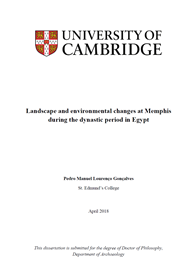| Main » Ad Board » ДРЕВЕН ЕГИПЕТ И АФРИКА » Икономика, стопанство и търговия |
| 16.02.2021, 16:42 | |
На древната столица на Египет - Мемфис са посветени множество изследвания, но настоящото е оригинално с фокуса си върху малко позната тема на проучване: промените в ландшафта и палеоекологията на района. Въз основа на резултатите от 77 сондажа в района на Мит Рахина авторът реконструира климатичните и пейзажни промени през цялата дълга история на фараоните. Проследяват се поетапно основаването на града върху три ръкава в началото на тогавашната Делта на Нил през Преддинастичния период, постепенното пресъхване на Западния ръкав през времето на Старото царство, опустошителните наводнения на Първия преходен период, мащабните реконструкции на пейзажа през епохата на Средното царство с цел тяхното преодоляване , ряазцвета на града като пристанище на Източния ръкав през Новото царство и териториалното разширение поради нарастването на населението през Късния период и епохата на Птолемеите до упадъка и изоставянето на града поради преместването на Източния ръкав след няколко столетия. - на английски език, от Apollo: University of Cambridge Digital Repository, формат PDF.Сваляне с ляв бутон (downloading by left button) от страницата на предоставящия сървър, после през бутона Preview/Download/ after by the Preview/Download button.АЛТЕРНАТИВЕН ЛИНК / ALTERNATIVE LINK: - на английски език, от Google Drive, формат PDF. Сваляне с ляв бутон (downloading by left button) от страницата на предоставящия сървър, после през бутона стрелка надолу/after by down arrow button.
| |
| Views: 524 | Placed till: 16.03.2021 | Rating: 0.0/0 | |

